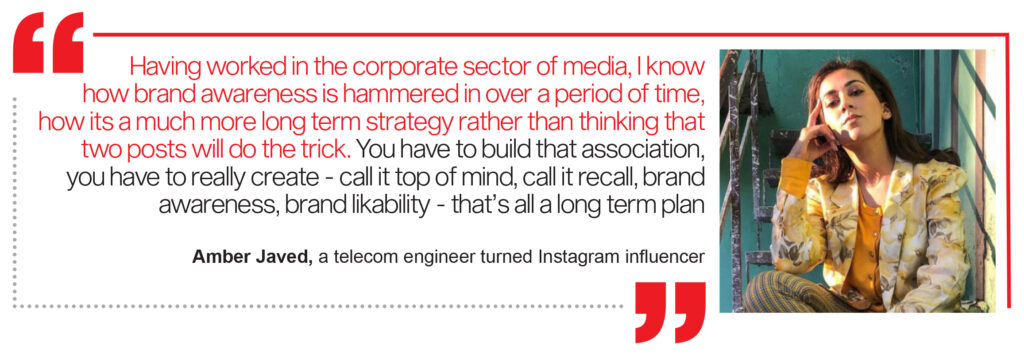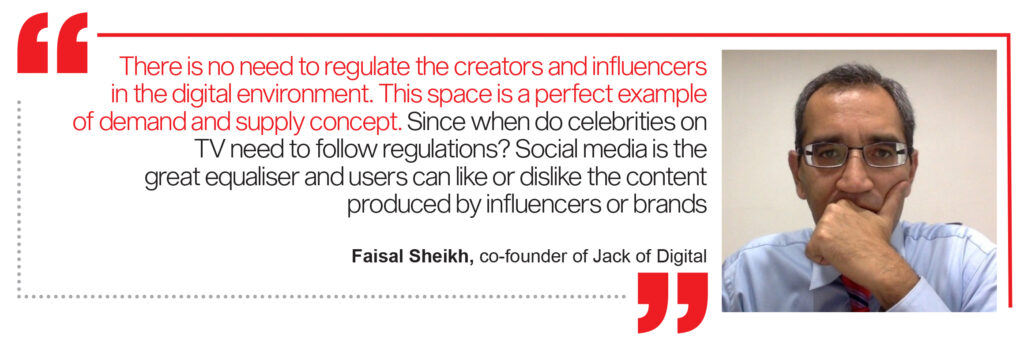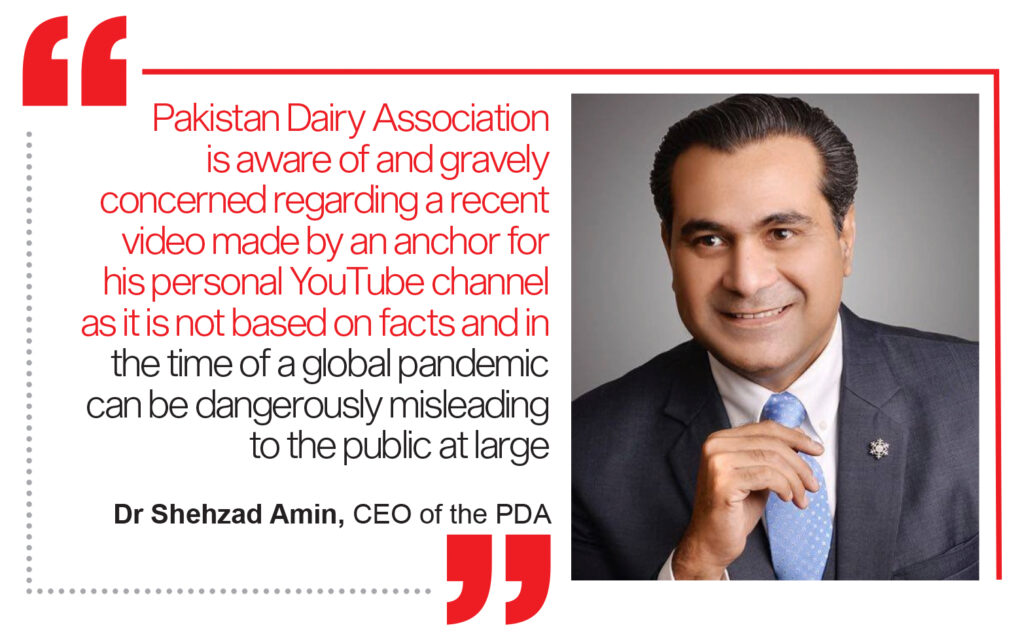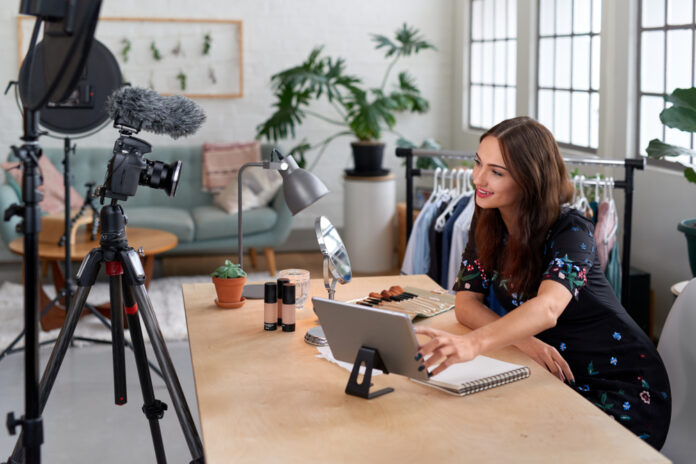On the 19th of December 2020, Gourmet News Network (GNN) anchor Imran Riaz Khan published a video on Facebook and YouTube that attempted to create a case against UHT packaged milk, citing anecdotal evidence. Gaining virality across WhatsApp with the classification of “forwarded many times”, the video attempts to dissuade audiences from using packaged milk and instead use raw milk or fresh milk.
The elephant in the room is that GNN is owned by Gourmet Foods, which in turn not only sells what it markets as fresh milk but also creates similar narratives against what is deems loose milk citing that the consumption of loose milk ‘can cause viral and bacterial diseases’ and that loose milk is usually collected and transported in contaminated environments.
In his video, Khan makes claims without providing scientific evidence, with statements going against recommendation of the World Health Organisation (WHO), against the regulations of global and Pakistani food authorities, against the endorsement of the Pakistan Medical Association, and against the official technical positions of scientific & technical associations. [restrict paid=”true”]
“Pakistan Dairy Association is aware of and gravely concerned regarding a recent video made by an anchor for his personal YouTube channel as it is not based on facts and in the time of a global pandemic can be dangerously misleading to the public at large,” said Dr Shehzad Amin, CEO of the PDA. “In the video, the anchor has tried to establish a link between the consumption of packaged milk with subsequently higher percentage of Covid-19 cases and deaths.”
Speaking to Profit, Dr. Amin expressed concerns that such a video might mislead consumers, undermine the efforts of government and regulatory authorities to control the spread of the virus as consumers may increase their exposure of infection by increasing interaction with others and compromise their immunity by consuming loose milk whose nutritional value is questionable.
According to the food and nutrition guidelines of WHO, ‘shelf-stable milk’ is one of the main items to stock up on, making packaged milk one of the best available options for consumption during quarantine and lockdown. Dr. Amin urged the government to take notice of the deceptive content so as to ensure the health and safety of the population at large.
“There is a campaign taking place, for which lots of money is being spent,” says Khan at the 4:25 mark on the video. “And I was approached to also work for this campaign. So I don’t want the money that plays with people’s health.”

He then goes on to say that members of the Pakistan Dairy Association (PDA) themselves also got together to create a narrative that the erosion of trust around fresh milk is the path to adoption of packaged milk, adding that this was done under the guise of public service messages. He adds that in a new campaign, the PDA and its members have enlisted the help of news anchors to push adoption and consumption of packaged milk.
Speaking to Profit under the condition of anonymity, a seasoned professional in the packaged milk industry said that the use of news anchors is akin to the use of social media content creators (SMCC) for the tactic known as influencer marketing. The business case for using anchors instead of SMCC’s for this campaign is the reach of the former which is often considered to be ten to twenty times greater than the latter. It also helps that the Pakistani public trusts mainstream media coverage of the Covid-19 pandemic more than social media, according to a new study conducted by Media Matters for Democracy.
“We are looking at it and would be working on advertisement guidelines,” said a spokesperson of the Competition Commission of Pakistan in a statement Profit. “In principle, disclosure regarding paid celebrity endorsement would be appropriate as in the case of political parties’ campaigns content.”
Two years ago, the Digital Headquarters (DHQ) roped in Junaid Akram for a campaign to prove that the packaged milk by Haleeb Foods is created in an environment that is beneficial to the health and safety of customers. Across Facebook and YouTube, the video showing Akram touring the facility and the various stages of product processing, has been viewed under a million times. In 2019, McDonald’s hyped up the launch of an “Anday Wala Burger” by using Ali Gul Pir, who at no point mentioned that he was part of the advertising campaign.
The difference between this and the current campaign featuring news anchors is that audiences on social media can supposedly tell when an endorsement is paid for whereas audiences on mainstream media cannot supposedly tell.
Instances such as the case study cited above are part of the reason that media professionals around Pakistan have called for action around regulating the influencer marketing industry, to create uniformity on best practices, set the standards around transparency, erode instances of fake news being spread for hidden backers, understand the rates across the board, and more.
Just as Airbnb and Uber were meant to democratise revenue making opportunities for homeowners and car owners respectively, historically the entry of larger enterprises has ruined the pricing model of both businesses and skewed supply. With Airbnb, homes in key cities are much more expensive to rent as inelastic pricing for tourists is preferred while the creators of Uber may have never meant for rental car companies to join their supply pool, driving up the prices of rental cars.
In a similar vein, within the influencer space in Pakistan, SMCCs that were born into wealth or live with a breadwinner that provides for them, have entered the influencer space with predatory pricing. By doing so, they have accessed projects and deals that their lower income or middle class counterparts – that look at their SMCC work as the sole source of income – cannot afford to access at low price points.

SMCCs that are wealthier enter the influencer space as a way to pass the time, a means to alternative forms of fame or attention, or as a gateway to building a portfolio outside of mainstream media. This also sets the precedent for advertisers and agencies assuming or expecting new SMCCs to charge nothing for their work, without realising that not everyone was born with a silver spoon or a well connected spouse or in-laws.
The absence of uniformity in pricing is another reason that even influencers are calling for change and a regulator to step in, to limit the predatory pricing strategy of those who can afford to go without an income as they are the children or spouse of a principal breadwinner.
Game, set, match
According to Business Insider Intelligence, the global influencer marketing industry is on track to be worth up to $15 billion by 2022, up from as much as $8 billion in 2019. As with any industry, upon reaching critical mass there is a consensus around ‘too big to regulate or reel in’, which is why media professionals in Pakistan are aptly calling for regulation such that the influencer space follows a set of rules and guidelines during its early stages.
In 2013, the Chicago-based Starcom MediaVest Group engaged California-based online entertainment network Machinima for a campaign meant to generate interest in the Microsoft gaming console Xbox One and its games. According to the Federal Trade Commission (FTC), in the first phase of the marketing campaign, a small group of influencers were given access to pre-release versions of the Xbox One console and video games in order to produce and upload two endorsement videos each.
The independent consumer trust agency found that Machinima paid two of these endorsers $15,000 and $30,000 for producing YouTube videos that garnered 250,000 and 730,000 views, respectively. In a separate phase of the marketing program, Machinima promised to pay a larger group of influencers $1 for every 1,000 video views, up to a total of $25,000. Machinima did not require any of the influencers to disclose they were being paid for their endorsement.
By September 2015, Machinima agreed to settle with the United States Federal Trade Commission (FTC) for engaging in deceptive advertising, while failing to disclose that the influencers were being paid for their seemingly objective opinions. An FTC spokesperson said that when people see a product touted online, they have a right to know whether they are looking at an authentic opinion or a paid marketing pitch, adding that this applies whether the endorsement appears in a video or any other media.
In subsequent settlements with companies across varying industries, the FTC has pursued charges based on the deception of audiences with media owners or influencers failing to disclose the commercial relationship between the product or service they are endorsing and the advertiser.
Besides intentionally misleading the public, the other reasons for doing so are the relative effectiveness of endorsements in driving commercial outcomes when they do not appear to be paid for coupled with the low costs of settlements compared to the high rewards for nondisclosure.
In 2019, the FTC authored an advertising disclosures guidance aimed at SMCCs that lays out the rules of the road for when and how influencers must disclose sponsorships to their followers.

The new guide, “Disclosures 101 for Social Media Influencers,” provides influencers with tips from FTC staff about what triggers the need for a disclosure and offers examples of both effective and ineffective disclosures, while underscoring that the responsibility to make disclosures about endorsements lies with the influencer. The guide outlines the various ways that an influencer’s relationship with a brand would make disclosures necessary, and it reminds influencers that they cannot assume that followers are aware of their connections to brands.
In the absence of any regulatory body overseeing SMCCs in Pakistan, audiences are only aware of content being sponsored when the agency or advertiser has asked them to do so. Other instances can emerge from the SMCCs themselves, with telecom engineer turned fashion SMCC Amber Javed telling Media Buoyz that she discloses all commercial relationships due to a desire to preserve trust with her audience.
“Having worked in the corporate sector of media, I know how brand awareness is hammered in over a period of time, how its a much more long term strategy rather than thinking that two posts will do the trick,” she said. “You have to build that association, you have to really create – call it top of mind, call it recall, brand awareness, brand likability – that’s all a long term plan. I feel people need to develop that with like minded influencers who they think can represent their brand in a good way.”
Self regulation via a trade body
In the months leading up to the FTC publishing its advertising disclosures guidance aimed at SMCCs, the Audited Media Association established the Australian Influencer Marketing Council (AIMCO) to create a collaborative forum to develop best practice standards for companies working in the influencer marketing channel.
Shortly thereafter the American Influencer Council was formed in mid-2020. The not-for-profit membership trade association is made up of SMCCs on Instagram, YouTube, TikTok, including bloggers, podcasters, photographers, illustrators, online personalities, creatives and custom content thought leaders.
Similar to the AIMCO, the AIC seeks to advance digital marketing education as well as the art and authenticity of co-branded content as shared through social media platforms for the ultimate benefit of society.
Both trade associations seek to understand the issues and opportunities in influencer marketing and develop an influencer marketing code of practice, which includes influencer vetting, advertising disclosure, contractual considerations such as content rights usage and metrics reporting. By mid 2020, AIMCO published the first Code of Practice, driven by transparency, best-practice and accountability, and industry leadership.
“[I want a platform where SMCCs] can be listed, their presence monitored which will help in reaching a larger brand base,” said Eisha Salim, head of planning at Mediavest in Pakistan. “Right now influencer marketing works on two levels: either the content you make is great or you hang out with the right people in agencies or brands. Which means the same influencers get used for competing brands and projects affecting the overall business.”
To achieve credibility at launch, Profit believes that the Pakistan equivalent for AIMCO and AIC would need to be co-created across the Pakistan Advertisers Society (PAS), the Marketing Association of Pakistan (MAP), and the Pakistan Advertisers Association (PAA), in order to cover the perspectives of the demand and supply side of the SMCC equation. It would help to ensure the leadership of the forum includes resellers of TikTok and Facebook in Pakistan, namely Jack of Digital and Dial Zero respectively, as platform experts.
With oversight from the CCP, policies would need to be created and followed across advertisers, agencies, and SMCCs which establish visual and language standardizations for sponsored content, a robust marketplace education program, a standard contract language to hold both advertisers and SMCCs accountable, creating a high transparency standard from post to post and platform to platform that eliminates any veiling of sponsored posts as organic content.
“There is no need to regulate the creators and influencers in the digital environment,” said Faisal Sheikh, co-founder of Jack of Digital. “This space is a perfect example of demand and supply concept. Advertisers pay for brand promotion services and creators & influencers provide such services. Since when do celebrities on TV need to follow regulations? Social media is the great equaliser and users can like or dislike the content produced by influencers or brands.”
Sheikh is making the point that celebrities on TV – such as news anchors endorsing packaged milk – are not beholden to disclosing the commercial backing behind their advocacy, adding that so why should SMCCs which have a following through truly democratised platforms. Representatives of the CCP told Profit that whether the endorsement for a product was made by a celebrity on TV or on an app, disclosure matters for the sake of consumer protection.
Regulation through a multi-channel network
It’s worth pointing out that this article does not suggest that a regulator or a trade body create barriers on the free speech rights of SMCCs, only that rules are in place such as audiences are well aware of the commercial relationship between the SMCC and the product they are endorsing. Taking the example of the FTC, failure to do so is considered deceptive advertising.

The second form of regulation can come from the free market – which is historically a farce – through the unification of platforms such as Amplifyd, Digital Engagement Network, (DEN) and Walee which can not only create & enforce the policies stated above but also weed out fraudulent stakeholders creating follower fraud through private blogger networks (PBNs).
Sources told Profit that the Planet N Group is considering replicating the business model of CastingAsia by creating a multi-channel network (MCN) consisting of a network of SMCCs akin to the roster registered with Amplifyd, DEN, and Walee. Covering every platform in the country, the MCN will behave as both the training academy for aspiring SMCCs – think of how the government of South Korea manufactures Kpop stars – and will lock in those SMCCs as their employees, taking a large slice of any and all earnings off the top.
Similar to the deal with the Ministry of Culture in South Korea and the Kpop stars, the MCN will train the talent, hand over insights to attract a niche audience, grow their following, attract advertisers and agencies, and represent the ‘talent’ for decades to come. The ‘talent’ in turn will have job security for life – or for as long as they are relevant to audiences – and will follow the strict cross-platform guidelines of the MCN.
Why does this matter? Audiences seek content and on social media platforms, the SMCCs are the source of the content. Similar to how people will choose Disney+ over Netflix once Phase 4 of the MCU shows hit the platform, millennial audiences will switch to a new app if their preferred SMCC switches as well. A recent example is the explosion of Spotify users after the Swedish audio streaming and media services provider announced that it made $100 million to Joe Rogan to move his podcast to the platform.
This matters even more as TikTok has eaten away at Facebook and Instagram so much that the American technology conglomerate was forced to create a subpar TikTok clone, which failed to attract an audience due to the poor creator experience, user experience, and an algorithm that does have create the same reach as TikTok. In response, Facebook offered TikTok SMCCs money to leave the video-sharing social networking service for Reels, which has not worked.
For the above mentioned reasons and more, the MCN that is being mulled over has been pitched as an ecosystem game changer in increasing the supply of brand safe SMCCs, controlling which platform they post content on, setting guidelines on how they endorse products and with what disclosures, and whether or not they will be available across different platforms.
It remains to be seen where the first MCN will come from and how quickly they scoop up top talent across the country, setting the rules of engagement, and industry evolution. The CCP has told Profit that it is currently working on its own advertising disclosures guidance report for the benefit of consumers and meant to hold advertisers, agencies, and SMCCs accountable. [/restrict]






















